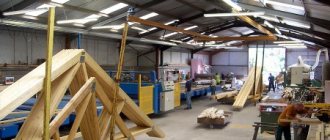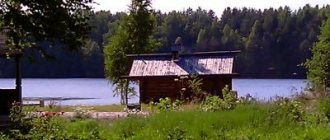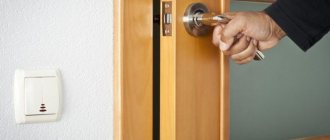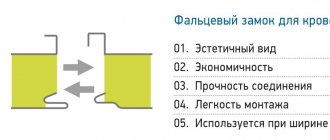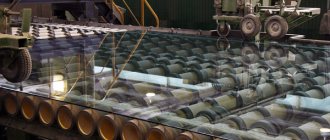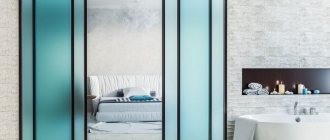Wood veneer is a special material that gives items a unique style. Veneer products have a certain charm that makes them stand out from the general background of the interior. Very often in apartments you can find veneered doors, beds, cabinets, countertops - they all look completely different. Not everyone can afford solid wood furniture, but veneer is an option. It will create an imitation of natural coating, while the cost of furniture will practically not increase. Read more about veneer products below.
Classification
Depending on the method of obtaining the material, veneer is distinguished:
- peeled;
- planed;
- sawn
Peeled veneer
Produced on special machines using the peeling method. Its thickness is 0.1-10 mm. This is a cheap veneer because it is produced in the most cost-effective way.
Birch veneer
To begin with, prepare the workpiece - the tree trunk is cleared of branches, twigs, etc. Then they place it in the machine. Next, the initial processing of the trunk is performed with a cutter: the bark is removed and the workpiece is leveled along the length. After this, a layer of veneer of the required thickness is removed along the entire length of the trunk at the same time.
The resulting semi-finished product is sorted by quality, appearance, etc. This type of veneer, compared to others, is not beautiful enough. Therefore, so that it can be glued to doors, it is processed, for example, painted or subjected to hot printing.
Sliced veneer
It is obtained by planing bars perpendicular to the wood fibers on veneer planing machines, in contrast to peeled wood, which is obtained by cutting the wood layer from a rotating block.
Production of peeled and sliced veneer
Veneer is made from deciduous and coniferous wood such as birch, maple, pear, elm, oak, linden, mahogany, etc. The thickness of the material obtained in this way is 0.2-0.5 mm.
Beautiful veneer for interior and exterior doors is made from twisted wood. In a twisted tree, the fibers inside the trunk do not run smoothly, but are intertwined, forming patterns in the form of knots, bunches, etc.
When producing veneer from such a blank, a layer is removed simultaneously along, across and at an angle to the fibers. This gives a beautiful pearlescent shine to the material. Karelian birch and sugar maple wood are valuable for such veneer. If you stick such veneer on ordinary wooden doors, they will look much richer and more beautiful.
Sawn veneer
It is made by cutting blanks. A high-quality product with a thickness of 0.1-1mm is obtained. However, this type of production is the most uneconomical, since about 60% of the wooden workpiece goes into sawdust.
Based on the wood texture, veneers are distinguished:
- radial (the pattern of annual layers consists of parallel lines that are located along the entire plane);
- semi-radial (the pattern of annual layers consists of parallel lines that occupy at least ¾ of the plane);
- tangential (annual layers create a pattern of cones, angles or curves);
- tangential-end (annual lines create closed curved lines).
According to the material used for the production of veneer, they are distinguished:
- natural;
- fine line;
- multi-veneer;
- eco-veneer
Natural veneer
Made from natural solid tree trunk. At the same time, the structure of the tree is preserved. The cost of natural material is in the middle price category.
Fine-line veneer
It is also made from inexpensive and fast-growing natural wood, but has a highly porous structure. The appearance resembles plastic. With the help of staining, fine-line veneer can imitate natural veneer made from expensive wood. This material is often used for finishing interior doors. It is made as follows. First, natural veneer is produced. Next, the veneer sheets are dried, sorted and painted in a specific color. After this, the sheets need to be glued together.
Fine-line veneer
As a result, the resulting block of veneer sheets is sent under the press. Very thin sheets of fine-line veneer are cut from the finished dried compressed block and glued to the surface to be decorated. In terms of its composition, it consists of 92-94% natural wood. The rest is glue and dye.
Multispon
Refers to a reconstructed type of veneer, like fine line. Geometric patterns are most often applied to its surface.
Eco-veneer
It is a polymer film with the addition of wood fibers. Its surface imitates the surface of natural wood. It is resistant to abrasion, temperature changes and humidity. Veneered doors using eco-veneer are durable and do not lose their performance characteristics for a long time.
Types of veneer
Currently, manufacturers offer three types of veneer:
- natural;
- fine line;
- multi-veneer
Natural and artificial veneer
Natural veneer is a thin sheet that is removed from solid wood by sawing, peeling, chipping or planing. This veneer is called natural because the unique texture of the wood is completely preserved during the production process.
This material occupies an intermediate price position: it is cheaper than natural solid wood, but more expensive than chipboard. At the same time, natural veneer has such qualities as environmental friendliness, sophistication and unique design.
Artificial veneer is a plastic film that imitates the structure and color of natural wood in appearance. Artificial veneer is quite widely used in decorating DSM surfaces.
Fine-line veneer
Fine-line veneer is a reconstructed veneer made using a special technology from natural wood with the ability to imitate various types of wood with certain sizes and different shades. The main raw material for the production of veneer using fine-line technology is wood from fast-growing tree species.
Fine-line veneer is made from rotary-cut veneer by forming it into blocks, from which veneer is then produced in a variety of colors, patterns and sizes. The technology for manufacturing this type of veneer was developed in accordance with modern environmental requirements and the need to obtain a new texture.
Fine-line veneer does not replicate any of the existing wood species and has a unique, clearly defined structure, pattern and color that meet modern trends in the production of slopes, arches, portals, doors, panels, furniture, etc.
Fine-line veneer is a reconstructed veneer made using a special technology from natural wood with the ability to imitate various types of wood
During production, wood goes through the following processing stages:
- peeling: logs are peeled into a strip of a certain thickness, which is then cut into veneer sheets of a certain size;
- drying the resulting veneer sheets and sorting them by color;
- through staining: sorted veneer is immersed in a tank with a dye solution;
- gluing and pressing: painted sheets are collected into bundles with the same fiber direction and sandwiched with a binder. The adhesive composition not only binds the veneer layers to each other, but also creates an additional decorative effect by adding dye. The created pack is pressed under high pressure;
- planing: from the resulting block, sheets of planed veneer are obtained with a certain predetermined texture and structure.
Composition: 92 - 94% - natural wood, 7 - 8% binder (glue), 0.3 - 0.5% - dye. Advantages: the material has a uniform predetermined pattern and color, there are no defects characteristic of natural wood - knots, knots and cavities. Disadvantages: the material turns out to be brittle, as well as porous, and when veneering it requires a large amount of glue.
Multispon
Multi-veneer is a specially reconstructed veneer made from natural wood. This type of veneer can be called the most “decorative”, since its appearance is often the least reminiscent of the patterns of natural wood. The main color motifs of multi-veneer are geometric patterns, often combining different color shades. Products made from this type of veneer look modern and fit perfectly into any interior in the Art Nouveau style.
The main advantages of veneered products are:
- environmental friendliness (natural natural material);
- impeccable appearance (rich assortment, the ability to remove defects characteristic of solid wood);
- durability (products lined with veneer do not dry out, like solid wood products, and are not afraid of humidity and temperature).
Characteristics
TECHNICAL DATA SHEET KAINDLFURNIERTE E1 (veneered)
Application area:
Veneered chipboard (MDF) has various applications in furniture production and interior decoration, but without a load-bearing function.
Design:
- valuable wood veneer
- load-bearing slab
- valuable wood veneer
Surface: valuable wood veneer.
Dimensions:
| Thickness | Carrier plate | Dimensions |
| 9/ 13/ 16/ 19/ 23/ 26/ 29/ 39 mm | Chipboard R2 | 2800 x 2070 mm / cross veneer possible |
| 9/ 16/ 19/ 26 mm | Special sizes: 3200 x 2070 mm 3600 x 2070 mm other sizes on request | |
| 4/ 6/ 9/ 13/ 17/ 19/ 23/ 26/ 29/ 39 mm | MDF | 2800 x 2070 mm / cross veneer possible |
| 16/ 19/ 23/ 26/ 29mm | Joiner board | 2800 x 2060 mm |
| 16/ 19/ 2530mm | Birch plywood | 2500 x 1250 mm 3000 x 1500 mm |
The load-bearing slabs correspond to emission class E1
general information
| Options | Unit | Test Method | |
| Anti-scratch resistance | Coeff. 3 | Degree 2* /2N | EN 438-2:2005 |
| Stain resistance | Degree5 Degree 3 | Group 1+2 without visible change Group 3 moderate change in gloss and/or color | EN 438-2:2005 |
| Behavior towards the glow of a cigarette | Degree 3 | moderate change in gloss level and/or moderate brown spots | EN 438-2:2005 |
| Surface defects | sq.mm/sq.m. mm/sq.m | Dirt, stains Fibers, hair and scratches | EN 438-2:2005 |
QUALITY DESCRIPTION: valuable wood veneer
Quality 1A: veneered quality A, but sorted according to customer requirements:
Definition of terms:
1. Frieze: calm - without flower
2. Figure: flower – with veins
3. Contrasting stripes: half flower - half with veins
4. Barrel: - minimum 6 slabs with veneer from the same trunk
- each barrel is individually packaged
- a trunk reversal is formed by a combination of figures; only beech and oak allow the trunk to open without a flower (real rift).
Sheet width: production according to specified board widths, with the exception of the first and last sheet, tolerance +/- 2mm. Price on request
Quality A: face veneer with different structures (no flower, half flower, flower), mostly pure or having only the usual wood characteristics of face veneer (for example, light sugar in Canadian maple), without residual sheets.
Quality B: uniform color, different structures, used for the visible sides of furniture cabinets or the reverse side of the fronts, minor wood characteristics, there are residual sheets with similar structures.
Quality C: uniform color, different structures, used as the front side of cabinets or the back side of fronts, minor wood characteristics, there are residual sheets with similar structures.
Quality GZ stabilizing layer – veneer
Veneer on the reverse side - at the choice of the factory
Small opening defects and crumbled areas, sapwood, accretion, etc.
Quality KP stabilizing layer – paper
Only for dimensions 2800 x 2070 mm
Slight warping is possible, we recommend using power paper only from a thickness of 16 mm
Quality A/B-LA on the front side there are veneers and quality A and B, on the back side B and C.
The product requires less sorting costs and can in any case be used for cabinets and interior decoration
Separate sections can also be used for fronts.
Qualities from 1A to KR can be combined in any configuration!
SURFACE: valuable wood veneer.
Feature: at the customer's request, several types of veneer shell production are possible (symmetrical, longitudinal, checkerboard, inverted).
Seam gluing: all veneer strips are glued end to end to ensure perfect quality of the veneer shell.
STORAGE RECOMMENDATIONS:
Veneered boards KAINDL Veneered E1 must always be stored horizontally in stacks over the entire area of the board, in closed warehouses, avoiding exposure to moisture and direct sunlight and UV rays.
TREATMENT:
KAINDL boards E1 veneer panels can be processed using conventional woodworking machines.
The surface of the veneer boards is processed with sanding paper K 80.
To remove possible residues of glue, grease, oil, etc. It is recommended to carry out final sanding before impregnation and varnishing. In any case, it is necessary to make a control sample of veneer with a treated surface (impregnation, varnishing, oil, etc.) in order to avoid possible surface defects.
If the above recommendations are not followed, subsequent claims will not be accepted.
Advantages and disadvantages
Veneer is a thin section of natural wood, not exceeding 3mm in thickness. It is widely used in the production of modern furniture, musical instruments, and is also used as a finishing material in creating fashionable interiors. The popularity of this natural material is due to the optimal combination of price and attractive appearance of the finished products. To make it easier to make a choice, we will analyze all the pros and cons that veneer furniture has.
The advantages of the material are as follows:
- variety of colors and textures. Various types of wood are used for production: from classic pine to the most expensive varieties;
- it is a natural, environmentally friendly material. Veneer is a covering made from natural wood;
- ease of processing allows the use of veneered blanks for products of various shapes and configurations;
- relatively low cost. Furniture made from veneer is much cheaper than products made from solid wood, which makes it more accessible;
- excellent appearance - high-quality products have the correct selection of patterns, beautiful texture, which give veneered furniture a wonderful appearance;
- practicality, resistance of facades to temperature changes and high humidity. Veneer facades are not subject to cracking or deformation as a result of exposure to external factors.
The material also has disadvantages:
- veneer coating is afraid of direct sunlight: under their influence it can change color;
- choosing a pattern at the joints can be difficult, because each sheet has its own unique pattern;
- easy to care for, eliminates the use of chemical cleaners that can damage the surface;
- products made from expensive veneer options (oak, ash, beech) are not cheap.
Veneer advantages
Veneer is used mainly for cladding wooden furniture. But not only: it is used to make plywood, skateboards, delta wood, cases for musical instruments, and is also used in some decorative works (marquetry), when finishing car interiors, doors, and match straws.
Why veneer has become so popular:
- cost of veneered furniture: not every consumer can afford such a luxury as furniture made of natural wood. And furniture lined with veneer is almost as good in appearance as natural furniture, but costs an order of magnitude lower;
- natural veneer: veneer, as we noted, is made from natural wood. But, at the same time, the use of veneer makes it possible to preserve forests that are susceptible to merciless deforestation in recent years, since the production of veneered furniture requires much less wood than solid wood furniture;
- originality of designs: wood veneer has a unique, inimitable pattern depending on the veneer manufacturing technology and the cutting method;
- lightness of furniture: compared to solid wood furniture, veneered furniture is smaller in size, lighter in weight, and more suitable for implementing original ideas. Veneer is easier to work with than wood;
- Duration of operation: veneered products are less susceptible to drying out, deformation, temperature and moisture.
Sources:
- https://duvils.ru/shpon
- https://dveridoc.ru/dekor/chto-takoe-shpon-dereva.html
- https://rubankom.com/materialy/1683-derevyannyj-shpon
- https://www.drive2.ru/b/452190650671038771/
- https://atmwood.com.ua/2015/01/05/shpon-vidy-i-xarakteristiki/
Cons and pros
In appearance, doors with veneer are very difficult to distinguish from analogues made of wood, since they are covered with a natural cut of wood.
Such doors have many advantages:
- The composition of the product is 99% natural, since it includes solid wood and a cut of valuable wood on the outside.
- Doors with veneer are made from environmentally friendly materials, so they are often used not only for bedrooms or living rooms, but also for children's rooms.
- The attractive appearance of the product is achieved through the use of natural wood, which is characterized by an original and unique print and texture.
Wooden doors with veneer allow you to create a good indoor microclimate. They perfectly allow air to pass through micropores. The lightness of veneered models allows them to be installed even on very thin walls. If the doors are installed correctly, they may sag in rare cases. A good combination of product quality and price. If you compare the cost of a veneered and wooden model, then the veneered version is much cheaper
If a model with natural veneer is also expensive, then you can pay attention to options with eco-veneer or other artificial coating. Models with veneer very often convey the texture of valuable wood. Cherry, pine, wenge, mahogany or ash veneer looks beautiful
Expensive tree species include black walnut and madrone.
- Veneered models can be repaired if the canvas is damaged during transportation or use. It is necessary to use a special composition for coloring the veneer or polish the damaged area.
- A product with veneer is characterized by excellent sound insulation properties, as well as the ability to retain heat excellently, if we talk about options made from solid pine.
- Modern manufacturers offer a wide range of veneered doors, from which you can choose not only the material, but also the color design and the required sizes. The doors are presented in natural colors. To give veneer depth of color, it is often stained.
Doors with veneer also have some disadvantages that you should familiarize yourself with before choosing doors:
- Natural materials are always expensive, so veneered models are expensive. The price of doors is also influenced by the manufacturer's reputation.
- Natural veneer is practically no different from artificial veneer, which allows scammers to pass off low-quality veneer as natural.
- To ensure long-term operation of the product, careful care is required. To clean doors, you should use special wax-based products.
To make a laminated door, a special laminate film is used. It perfectly conveys the texture of the array. Of course, such products are distinguished by their affordable cost, increased wear resistance and reliable protection from moisture.
Color spectrum
The color of natural veneer depends on the type of wood: light pine, ash, wenge, cherry, velvet or bleached oak. Each manufacturer has its own palette. But if the material is natural, then each product will have its own unique shade with an individual wood pattern.
Multi-veneer, fine-line, and eco-veneer provide the consumer with a wide choice of colors, textures and patterns, limited only by the imagination of the designers. The difference between these materials and natural veneer is that they guarantee stable color and texture, and changes in shades of the material occur strictly at the request of the customer, and not at the whim of nature.
What types of wood veneer are there?
Sliced veneer
As for this product group, it has the following differences:
- sheets are produced on special veneer cutting equipment, characterized by high precision and cleanliness of processing;
- product thickness can vary from 0.2 to 5 millimeters, which is sufficient for most uses;
- This production method is used when working with valuable wood species, as it allows their structure to be presented in the most favorable light. The most commonly used wood for work is oak, walnut, beech, Karelian birch, acacia, ash, yew and much more.
You should remember one simple rule: the thicker the veneer, the more reliable it is, so you shouldn’t save money and buy the thinnest options
Peeled veneer
The production of wood veneer using this technology has the following features:
- The production process is very simple: logs are cut into pieces of small width, after which they are cut into sheets of small thickness using a special knife. The quality of this option is noticeably lower than the first, but the cost is lower, so it is the most popular;
- The following types of wood are most often used for work: pine, birch, alder and oak;
- The thickness of the finished elements can be from 0.1 to 10 millimeters, which allows you to choose the optimal solution for any type of work.
Sawn veneer
As for this type of product, the following can be noted about it:
- products are produced on special machines that cut the block layer by layer, due to the large amount of chips that are formed during work, the cost of the material is high;
- the thickness of the lamellas, which is what the finished elements are called, can range from 1 to 10 mm;
- Products of this type are of particularly high quality, so they are very often used in the production of musical instruments; they can also be used in the interior and in the manufacture of furniture; such surfaces practically do not require additional processing.
It is important to choose the option that is best suited in a given situation, and if the manufacturer has recommendations for use or special instructions for carrying out work, then all requirements must be followed in order to obtain a guaranteed high result. One simple rule should be remembered: the thicker the veneer, the more reliable it is, so you should not save money and purchase the thinnest options
Veneer is one of the materials whose popularity never decreases; moreover, with rising wood prices, the demand for this option will be even greater
One simple rule should be remembered: the thicker the veneer, the more reliable it is, so you should not save money and purchase the thinnest options. Veneer is one of the materials whose popularity never decreases; moreover, with rising wood prices, the demand for this option will be even greater.
Main types of wood veneer and their characteristics
Veneer is classified according to the method of its manufacture:
- peeled;
- planed;
- sawn
The thinnest veneer is obtained by peeling. The essence of this production process is to cut the thinnest layer of wood from a constantly rotating log. This type of veneer is the cheapest and is inferior in some qualities to planed and sawn veneer.
As a rule, such types of trees as aspen, pine, alder, birch, beech, and oak are used for its production. This type of processing is used for the production of laminated plastics, plywood, laminated laminated wood, MDF gluing, as well as for veneering individual furniture elements.
The thinnest veneer is obtained as a result of peeling
Sliced veneer is obtained by planing wooden beams with special knives. It makes an ideal pasting for door and furniture facades, wall panels, since the production technology allows you to make cuts from the timber at different angles, experimenting with the pattern and texture of the wood. It is often used to decorate objects using the marquetry technique.
Sawn veneer is the thickest - from 1 to 12 mm. It is produced by sawing processed logs into thin planks. This is the oldest method of obtaining material known to craftsmen, but also the most expensive, since its use results in a lot of waste. Veneer made in this way is often used for expensive furniture inlays, as well as for creating bent joinery or furniture elements. It is best made from cedar, fir or spruce raw materials.
This type of veneer is of the highest quality among all that are produced, therefore, if you are doing renovations yourself and are looking for a suitable finishing material, then it would be quite advisable to use it in combination with MDF for cladding doors, creating wall panels or curved stairs. Just keep in mind that in this case the repair will cost slightly more than using planed or peeled material.
With the help of sawn veneer, you can update and restore rare furniture - in such a situation, pasting the product with sheets with a wood pattern carefully matched to the original will help.
Interior doors made of veneered MDF
MDF and veneer are those materials that, due to their properties, have become the most successful option for replacing natural wood, and when they are combined, objects are obtained of excellent quality and are not inferior to the natural prototype.
In order to produce veneered MDF doors, a special technology using high pressure and temperature is used. It is this that ensures such properties of the material as reliability, practicality and durability. Due to the very high compaction density, such doors are moisture resistant and practically do not deform. Compared to wooden models, they are more functional. Their advantages: light weight, aesthetic appearance and long service life.
Veneer is a modern finishing material, which has recently become quite widely used in various finishing and carpentry works. Over the years, it has managed to prove itself only from the best side, and to this day it is the most widespread and in demand.
What is veneer?
Veneer is a very thin plate of wood, the thickness of which cannot be more than 10 millimeters. It is obtained by cutting plates from a round log or beam. From German, the concept of “veneer” is translated as “chips”.
Craftsmen highly value the presented material, since its appearance is original and it fully conveys all the beauty of natural wood. Each drawing is unique, and it is very difficult to convey it; other materials will not allow this to be done.
Veneer is used in many areas - furniture production, door production, production of decorative panels, and so on.
Colors
The colors of the slabs are offered in a wide range, so everyone can find something that meets their design needs. You can choose transparent or translucent slabs, on which a lace pattern is applied. These slabs imitate glass and stained glass; such unusual decor is often used as a separate component that complements the overall interior. The dense monochrome coating of veneered MDF boards is presented in pastel and bright colors. If you need a light facade, you can safely choose panels with this design. The range of solutions can reach 200 options, while the execution can be either smooth or textured.
It is worth noting that white slabs are available in several shades, which allows you to achieve the ideal design solution and interior decoration. Of course, slabs made from solid wood, metal or natural stone are in great demand. This effect is created using films, patination, brushing and embossing.
Fabric manufacturing technology
A veneer door can be produced using different technologies, depending on whether the product is hollow or solid.
They are manufactured according to the following scheme:
- The frame is assembled from pine bars, which have a moisture content of no higher than 8%. If this indicator is higher, then the material may dry out and deform with the appearance of cracks.
- One side is covered with MDF sheet (4 mm).
- The resulting cavity is filled with filler - cellular cardboard or polystyrene foam.
- The other side is also hemmed with MDF sheet.
- Veneer is selected according to color and pattern, and it is necessary to achieve its symmetry.
- Veneer sheets are laid out with a margin of the size of the canvas and placed in a machine in which the blanks are glued to each other using a zigzag adhesive thread.
- After covering with veneer, the remaining glue is removed from the workpiece, cleaned along the seams and precisely adjusted to size.
- The veneer is glued to the door.
- A layer of varnish is applied to the veneered canvas to protect it from environmental influences.
Veneered interior panels can be produced in a solid version. In this case, it is not the frame that is assembled, but the whole canvas. The assembled bars are placed under a hot press and firmly glued into a monolithic panel.
It is also possible to finish a metal door with veneer. MDF panels are attached to the metal with self-tapping screws, and then a decorative coating is applied.
The veneer covering is glued using 3 methods:
- Cold pressing. PVA glue is applied to the front surfaces of the workpieces and placed under a press. Bonding is carried out at a temperature of +30…+35°C. Then the ends are glued. After the glue has completely dried and hardened, the dried residues are removed, then all surfaces are sanded.
- Hot pressing. The coating is glued using formaldehyde-containing adhesives at temperatures above +100°C.
- Membrane-vacuum. A special press allows you to cover not only smooth surfaces, but also embossed ones.
Advantages and disadvantages
The kitchen is a place where furniture is exposed to special negative influences: temperature changes, grease stains, and soot deposits certainly accompany the cooking process. Housewives try to select a set that will withstand all unfavorable factors as firmly as possible and will not deteriorate or become deformed.
- Durability. Lacquered veneered facades not only look stylish, but are also very wear-resistant and durable. This surface is not easy to scratch, it is impact-resistant, and is not afraid of moisture, steam, or direct sunlight.
- Maintainability. Furniture can be easily restored even at home. If scratches appear, they can be sanded; if there are chips, they can be eliminated using the same veneer patches. As for film or plastic, such surfaces cannot be restored after serious damage.
- Acceptable price. Compared to solid wood, kitchens made of veneer are much cheaper, and in terms of characteristics, veneer is significantly ahead of its expensive competitor.
- Stylish design. Veneered fronts look great in both small and small kitchens, as they look elegant and less bulky. The plasticity of the veneer material allows you to create unique shapes, so the furniture fits into classic and modern interiors. It is also possible to choose any color and texture you like, and make the surface matte or glossy. Veneer combines harmoniously with glass, acrylic, metal or plastic.
- Easy care. Sheets of natural wood require the same care as solid wood. Stains can be easily removed with a damp cloth or sponge. Under no circumstances should you use aggressive household chemicals containing abrasive particles to avoid damaging the surface. It is advisable to use a simple soap solution or special furniture sprays. They will help maintain shine and attractive appearance for a long time. Designers recommend choosing lighter shades, since stains and dust are much more noticeable on dark brown, black, and dark blue facades.
- Environmental friendliness. The kitchen is the place where a person spends most of his time, so the quality of the material should come first. Veneered facades, unlike film or plastic, do not pose a threat to human health, since no harmful substances or chemical compounds are used in production.
Veneered facades are strong, durable and do not deform.
Veneer varnishing provides additional protection for the façade
- The quality of a kitchen set is difficult to assess at first glance. Only during operation can one understand how conscientiously the manufacturer produced the veneer. If raw materials were used in the work, then over time the facades may become deformed, and the veneer may peel off from the substrate. When purchasing a set, you should give preference to reputable companies that provide a guarantee on the purchased furniture. However, it is necessary to adhere to certain rules for caring for the headset, otherwise the manufacturer may void the warranty if the instructions are not followed.
- Unfortunately, like any wood, veneered wood is susceptible to the negative effects of ultraviolet rays. Over time, facades may fade, for example, the white color may turn gray. Sanding and refinishing the coating will help solve the problem. Plus, this is a good way to change up your kitchen design a little and experiment with shades. For small kitchens it is recommended to choose light colors; in large ones you can combine different colors.
- The price of veneer is significantly higher than products made of plastic or vinyl film coating. Increased consumer demand and wood shortages also lead to a constant and systematic increase in the cost of furniture from year to year.
Veneered panels are often combined with others, for example, with film or enamel
Where is it used?
Wood veneer is used for decorative purposes in the furniture and woodworking industries. It is used to finish surfaces made of cheap materials. Veneer coating creates the effect of natural wood at a low cost of the finished product. Thin veneer is used in the manufacture of door panels, as well as finishing wall panels. This material is used to make matchboxes, produce fruit boxes, and is also used in the technology of producing multilayer plywood sheets.
The base for veneering can be a sheet of chipboard, MDF, or plasterboard. Wood cut sheets are suitable for restoration work when repairing used furniture. Sliced veneer is used in the manufacture of sports equipment, designer souvenirs, household items and much more. Sawn veneer is used in the creation of musical instrument cases, doorways and arched structures, exclusive furniture models, boxes, panels, and gift products. The colored veneer of noble wood species is a subject for creativity.
Applying veneer to the surface
There are two methods of veneering a door structure:
- Hot;
- Cold;
Hot pressing
For gluing veneer onto an MDF surface, formaldehyde-based glue is most often used, which is not very safe for human health, but is cheaper than the adhesive used in the “cold” method. The gluing process occurs at temperatures above one hundred degrees.
Cold pressing
PVA glue is used, which is safer, although more expensive. The temperature at which the surface and veneer are bonded is from 30 to 35 degrees.
At the initial stage, the front part of the door leaf is pasted, then the sides. After the adhesives have dried and hardened, the surface is sanded, removing dried adhesive residues and other blemishes. The last step in processing the door block is varnishing.
You can also decorate metal doors using veneer. A veneered metal door is finished on the outside with eco-veneer or other artificial analogue, and on the inside with natural veneer. To do this, an MDF sheet is attached to a metal sheet using glue and self-tapping screws. And then the gluing technology is repeated the same as that used for wooden doors.

